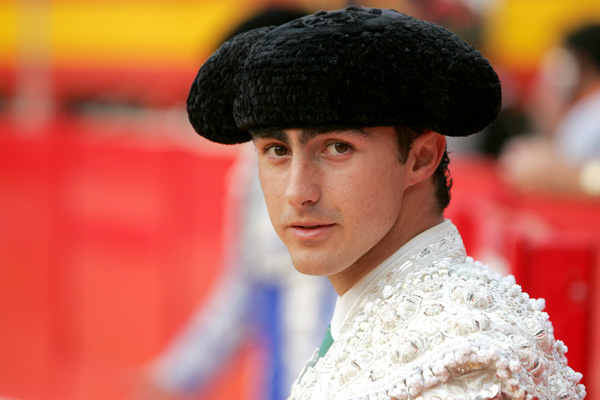|
Reviews of Recent Independent, Foreign, & Documentary Films in Theaters and DVD/Home Video

THE MATADOR The word aficionado has long been associated with the sport of bullfighting, a defiantly old-world sport trying to survive in the new world. As American Matador John Fulton once said, “An aficionado is someone who knows all about bullfighting but loves it anyway.” In The Matador, directors Stephen Higgins and Nina Gilden Seavey follow three years in the career of David Fandila, an up-and-coming matador. Known professionally as El Fandi, David is a serious young man with movie star good looks. He is intensely dedicated to his chosen career and his goal of winning 100 corridas, or fights, in one season—a benchmark of greatness that has only been accomplished by only 12 other bullfighters. As he battles injuries and other frustrations, we see how David’s goal not only subsumes his life, but that of his family. His father and others in previous generations were matadors, but never came close to the top ranks. His mother had to endure watching her husband try to survive the sport and now must watch again as her son puts himself in danger every time he enters the ring. David’s brother, Juan Alvaro, was more or less asked to give up his life in order to become David’s full-time assistant; at one point, David’s parents joke about “David and his shadow,” and it’s sadly appropriate. Juan Alvaro is a constant, silence presence, always there to help David put on the complicated matador’s costume, pack bags, drive, and generally stand by to contribute whatever is necessary to make David a success. Success in bullfighting, though, always means that a bull has been killed in an arena to the accompaniment of cheering, screaming fans. Higgins and Seavey don’t shy away from showing the bloodied bulls in the ring, or the controversy that engulfs the sport. They bring in talking heads to argue both sides of the issue: is bullfighting an inextricable part of Spanish culture? Or is it an anachronism? As for David, he is aware of the issue, but seems one step away from being bewildered by it—he can’t see the problems others have with the sport because he only sees its beauty. I am not a fan of bullfighting but came to this movie with an open mind, waiting for the filmmakers to make the case for it. For me, they failed. The main problem is just the lack of context. The various people speaking in favor of the sport discuss its history, its tradition, its meaning, but they don’t explain it. It’s hard for viewers to see the sport's value if the rules (other than “bull dead, man wins”) aren’t explained, if we don’t understand why the matador wears what he does, if the moves aren’t defined in any way. A couple of fans—aficionados—discuss whether David is “artistic” enough, or whether his moves are “classical” or not. But that’s meaningless if a viewer doesn’t know what a classical move is, what artistry in the ring is. Otherwise,
it looks like an ugly horror show in which a tired, confused,
pained, blood-soaked bull with banderillas stuck in his back staggers
around a ring until a matador dances up to him and stabs him. One
talking head compares it to the ballet; another exclaims that it’s man
versus animal, just like in nature. An outsider to the sport might say,
though, that at the ballet, no one dies (well, outside of The Red
Shoes), and in nature, the bull would have all the advantages. For
aficionados of bullfighting, there is no doubt much appeal here. But if
you’re not in the know, the film does not bring the goods to convert you.
Kirsten Anderson
|

